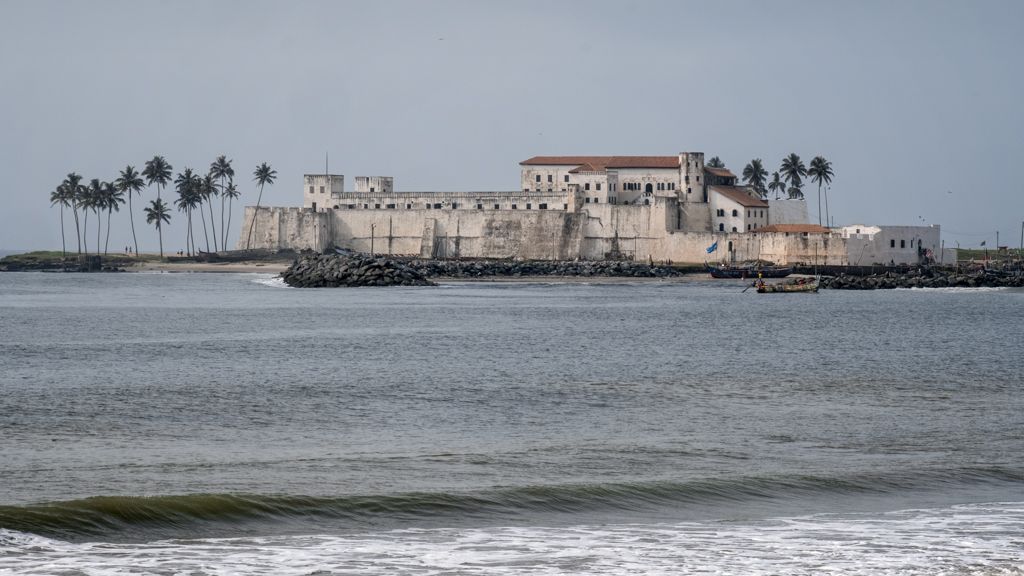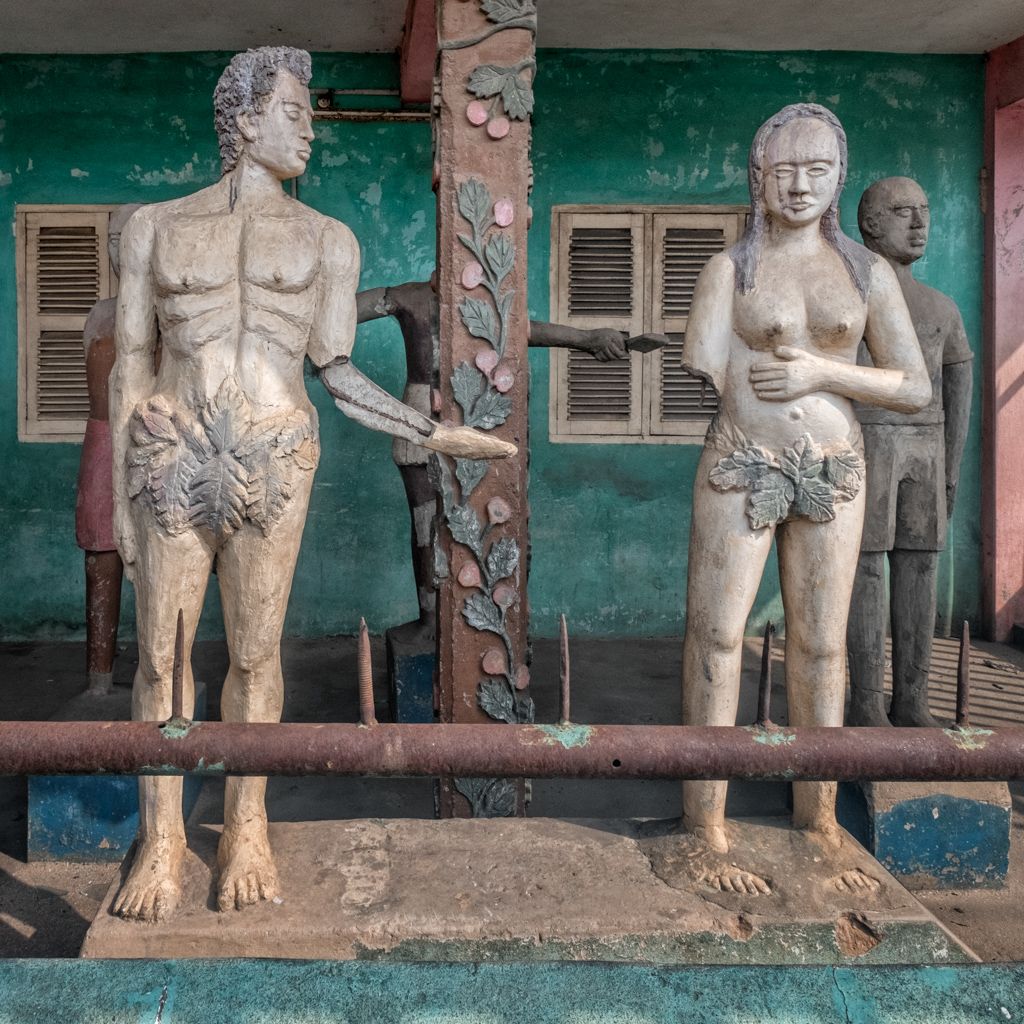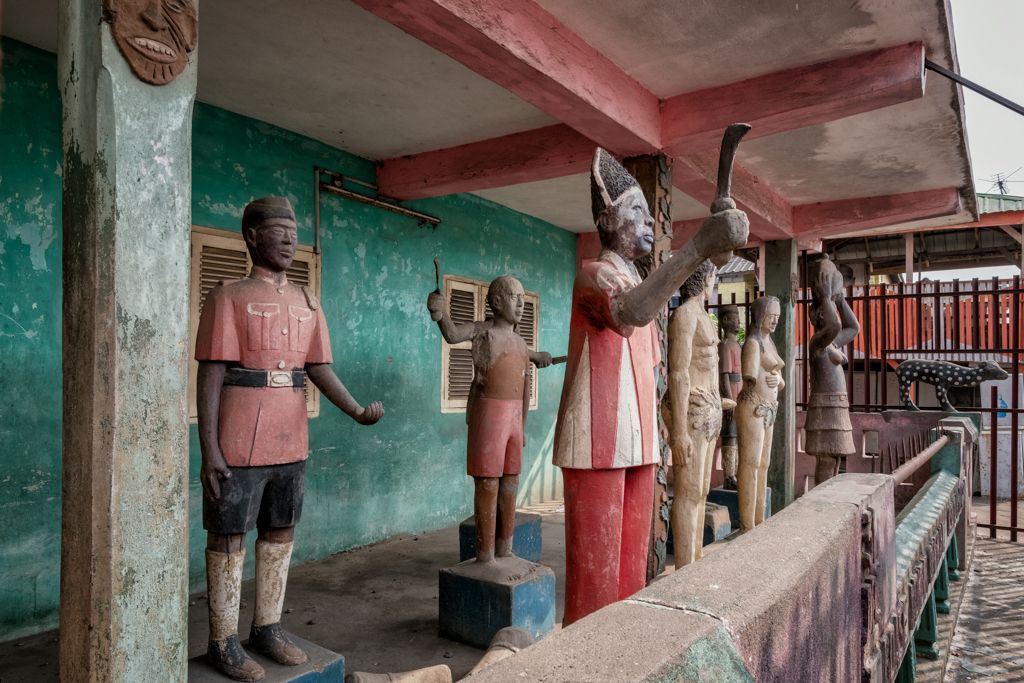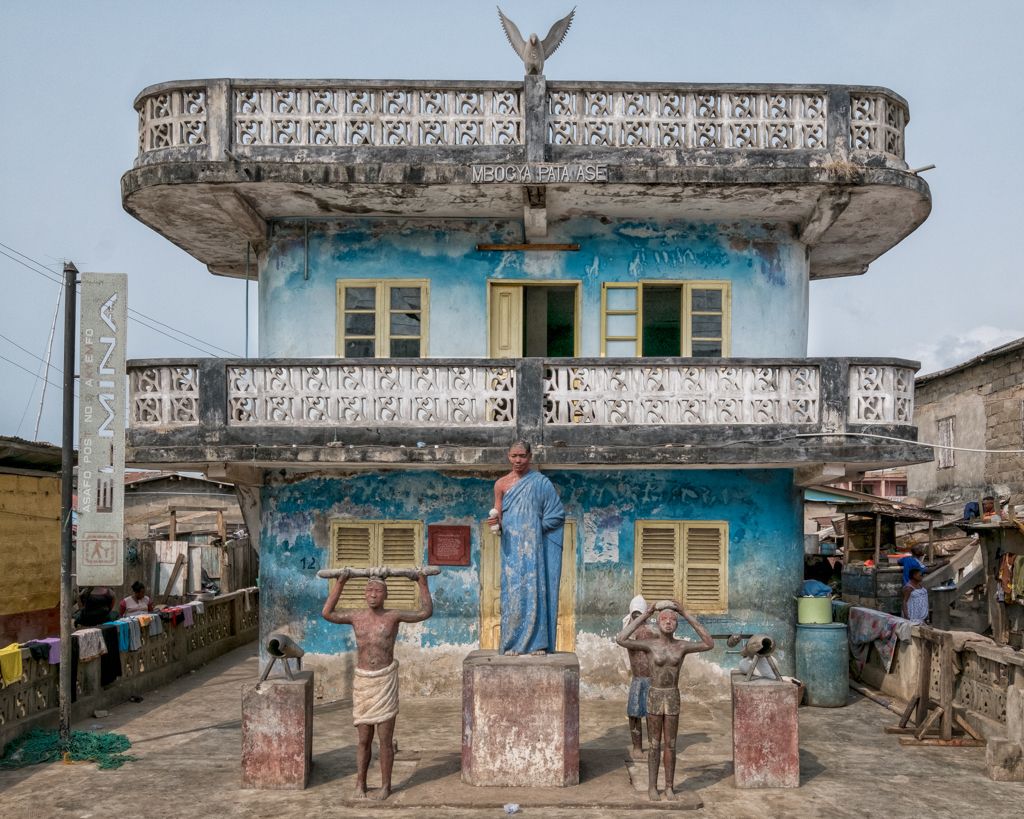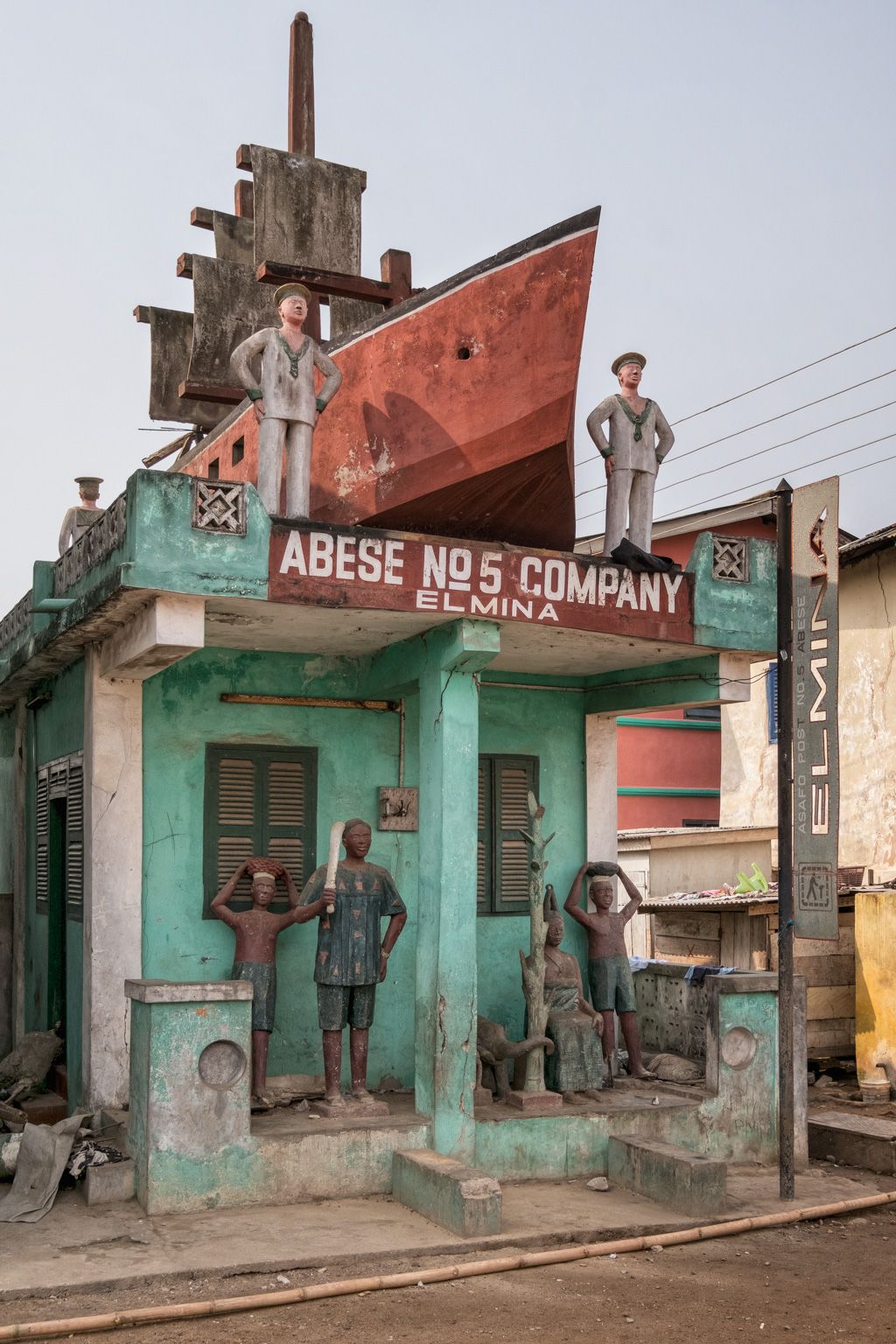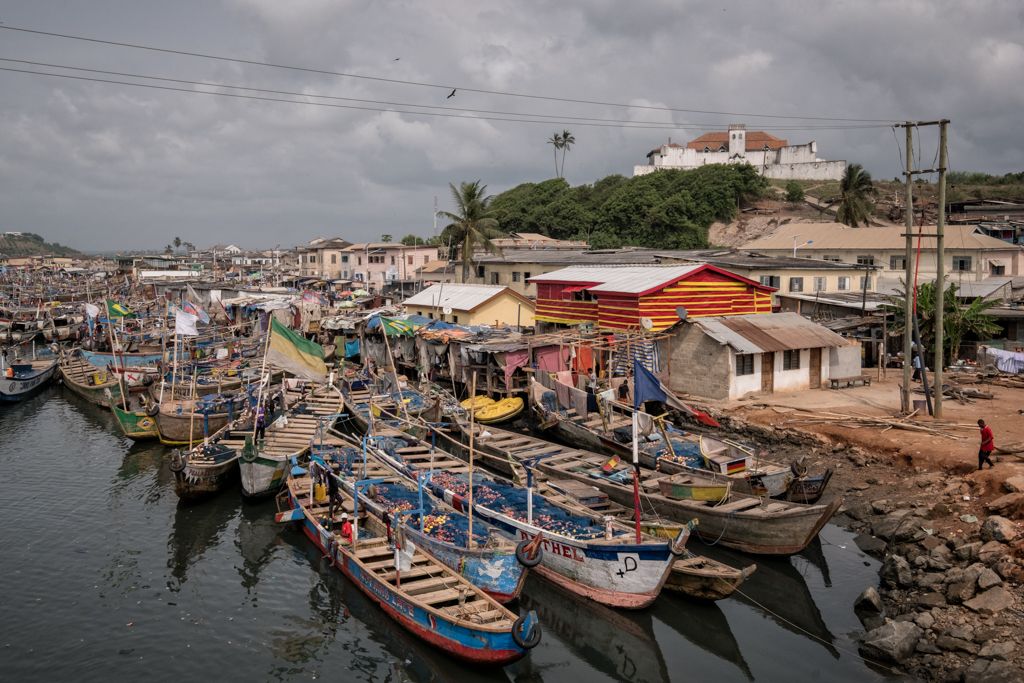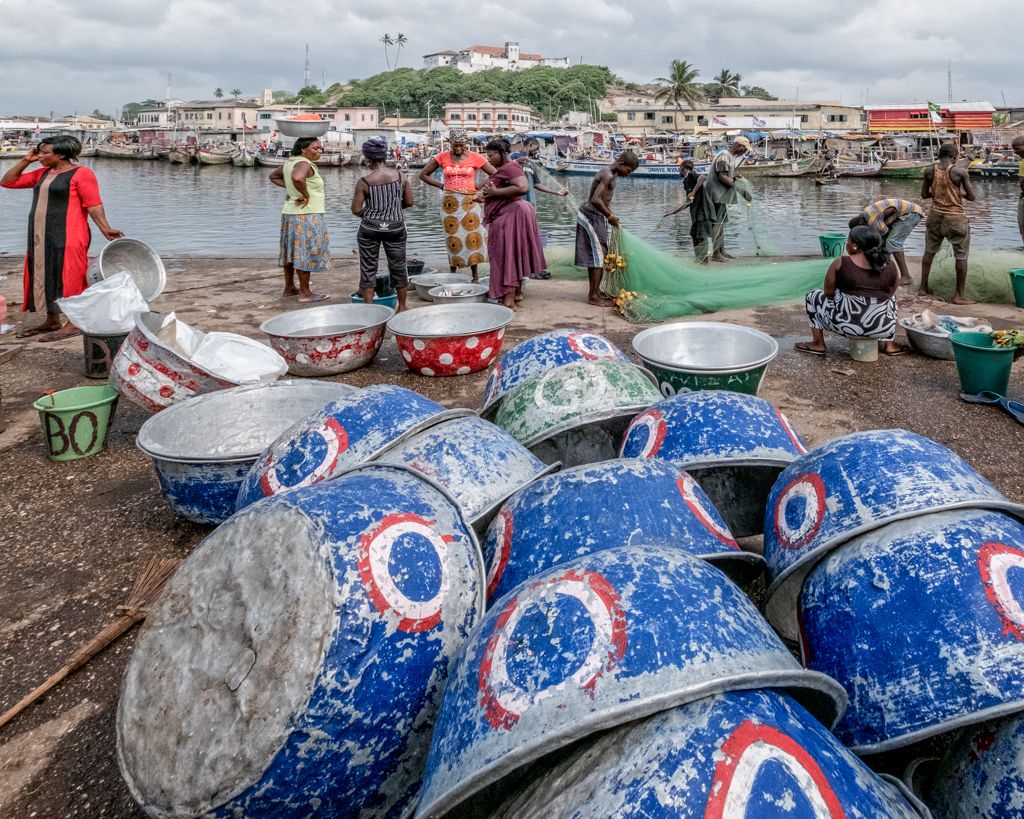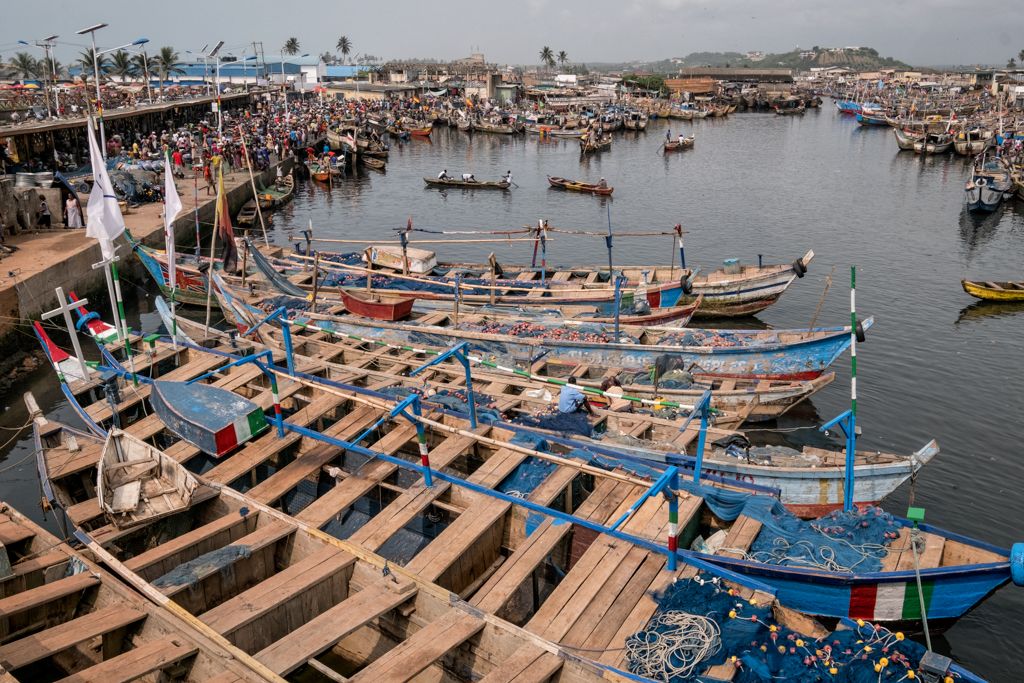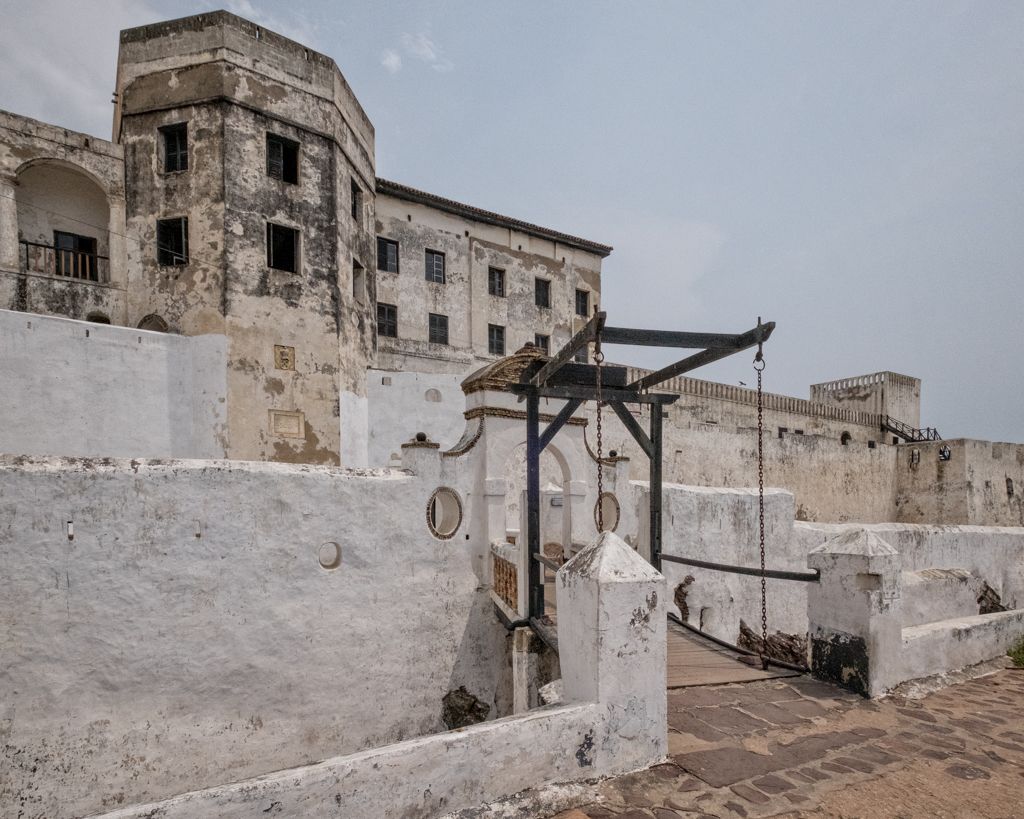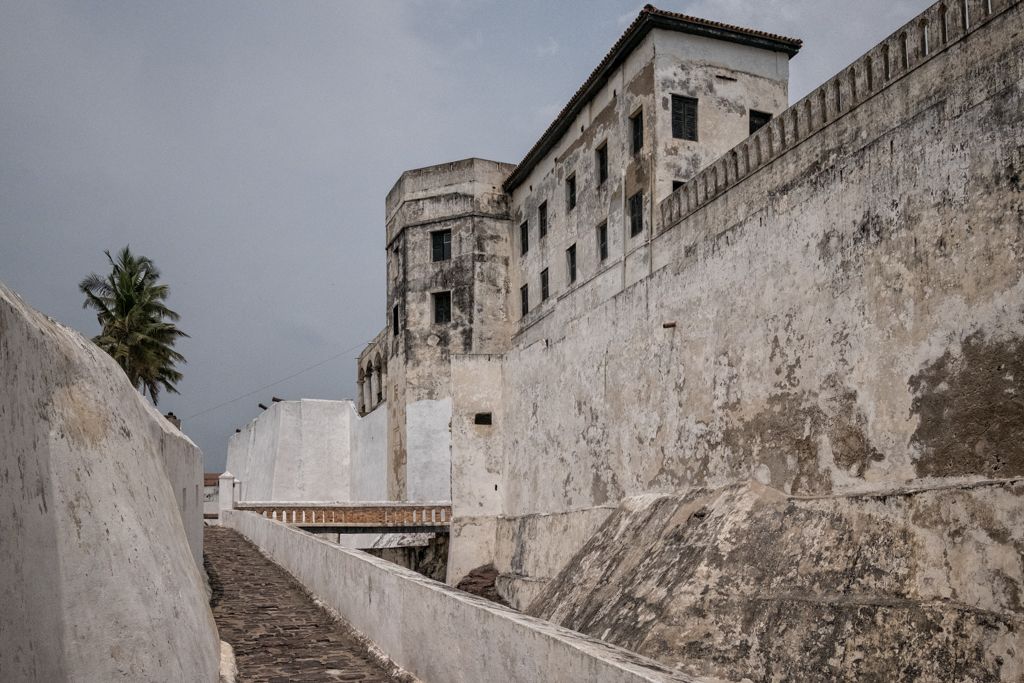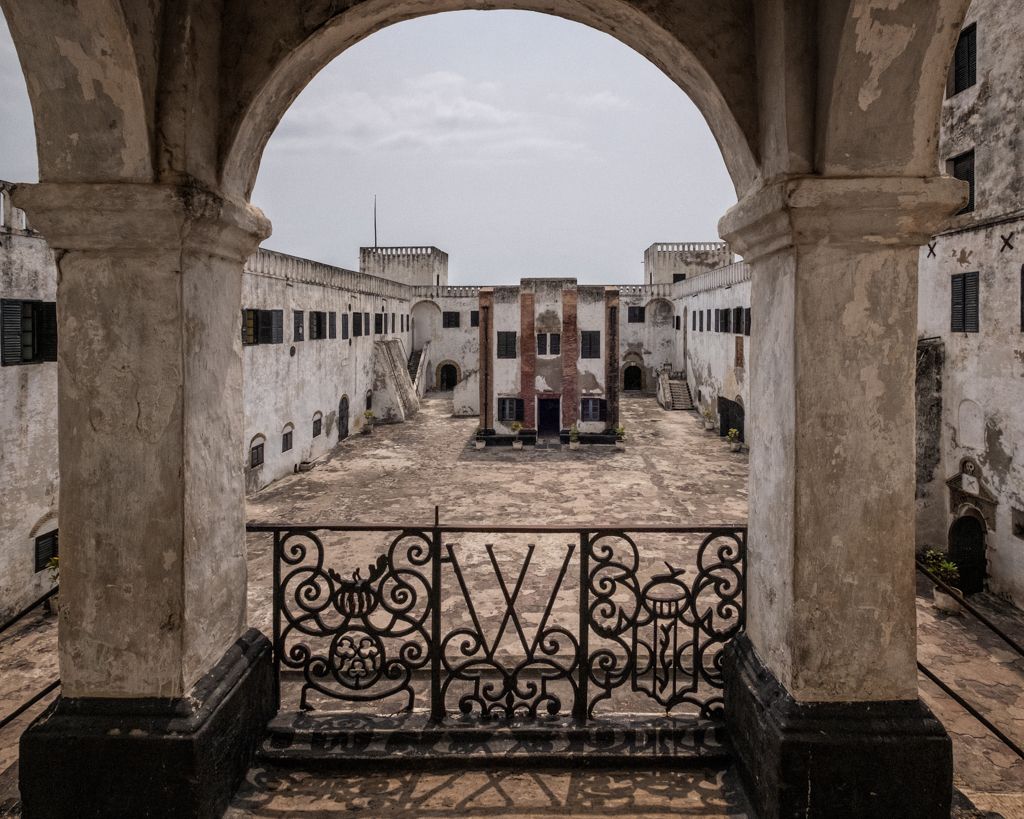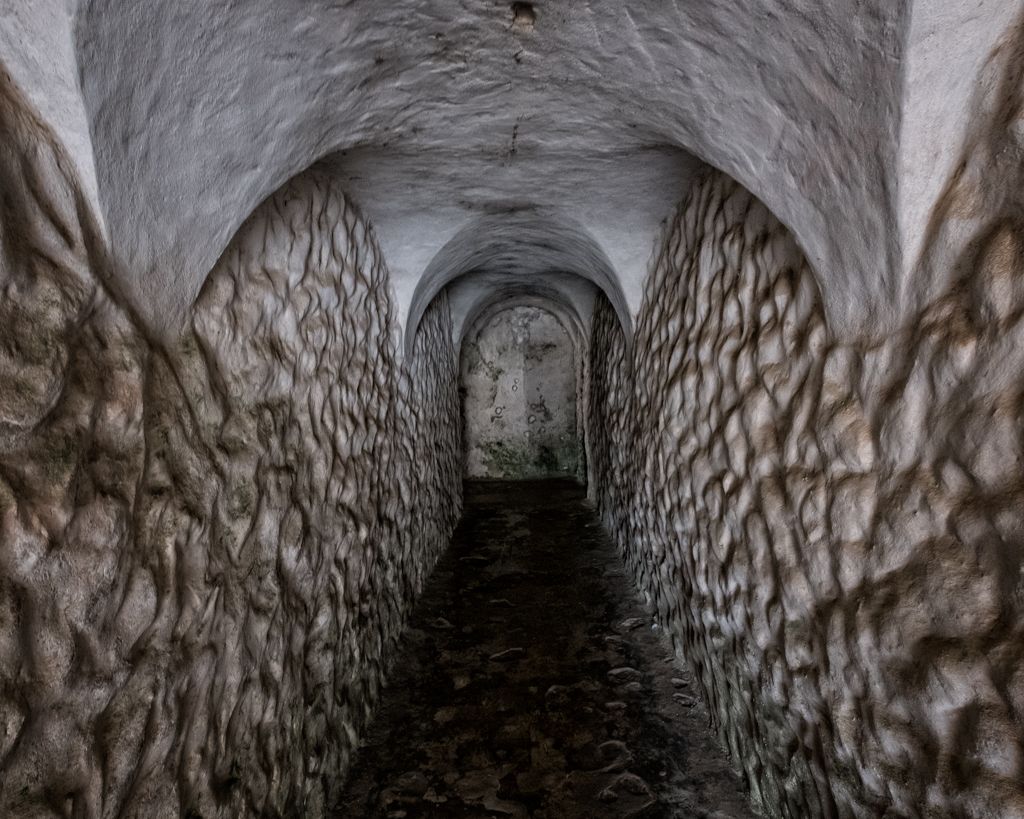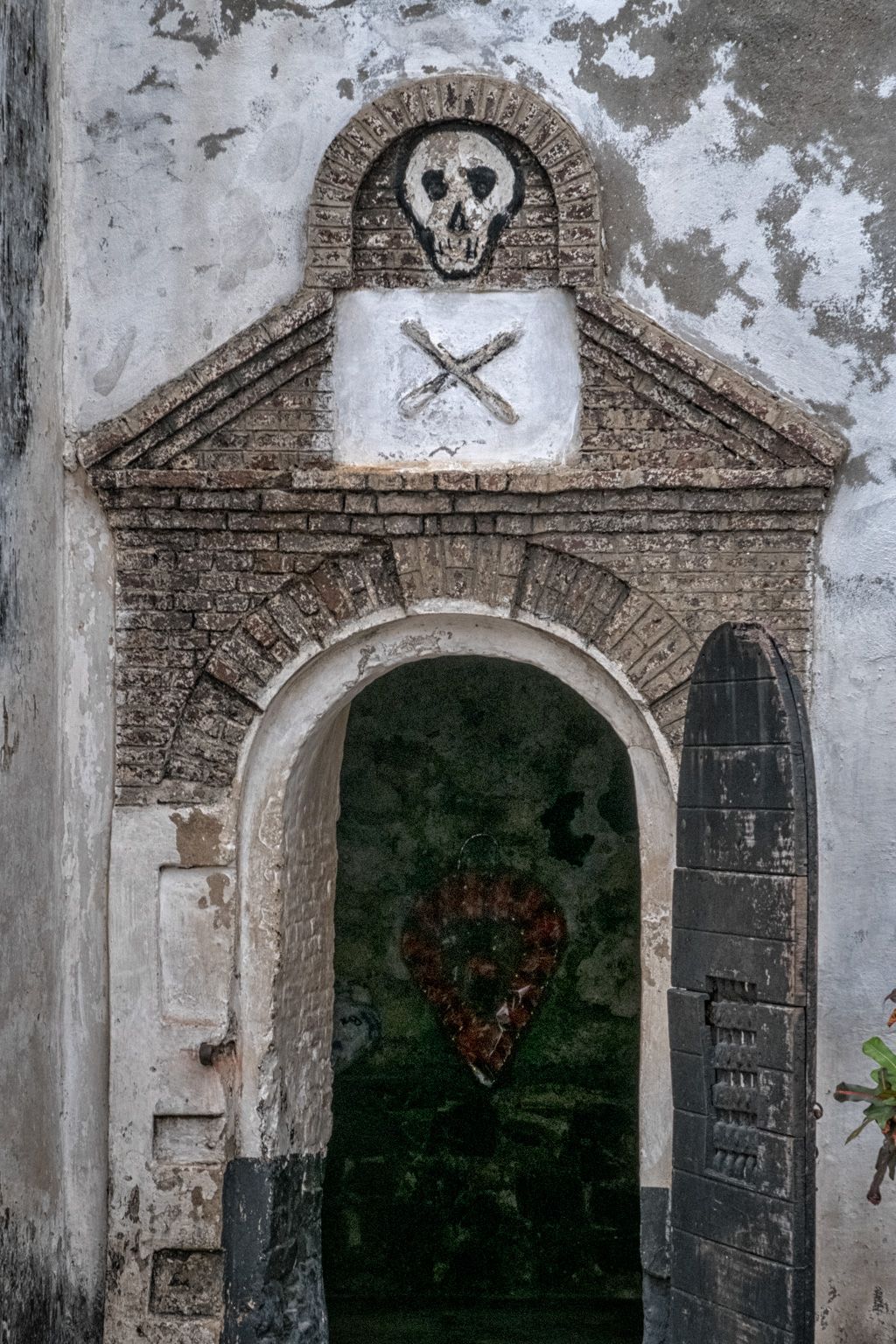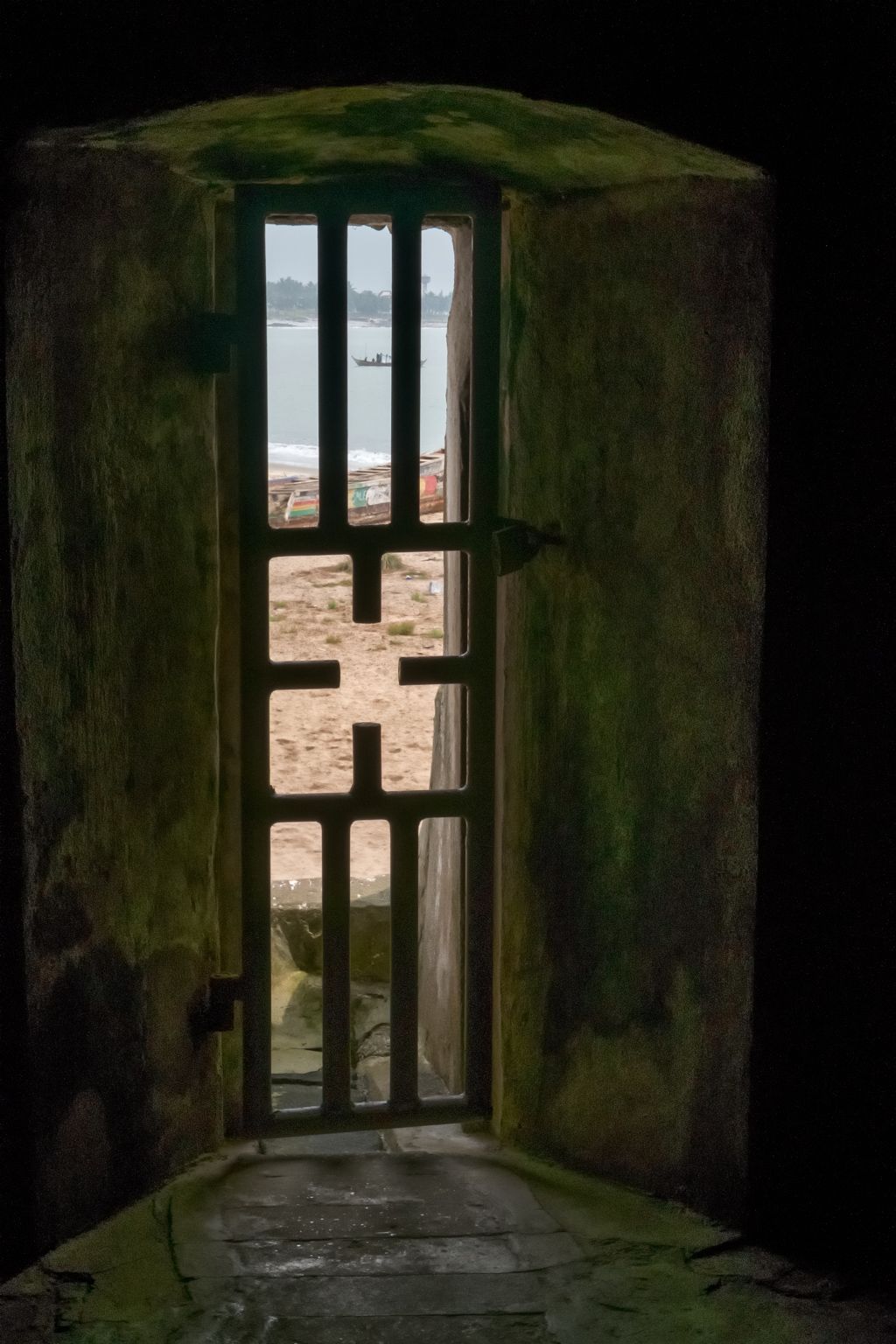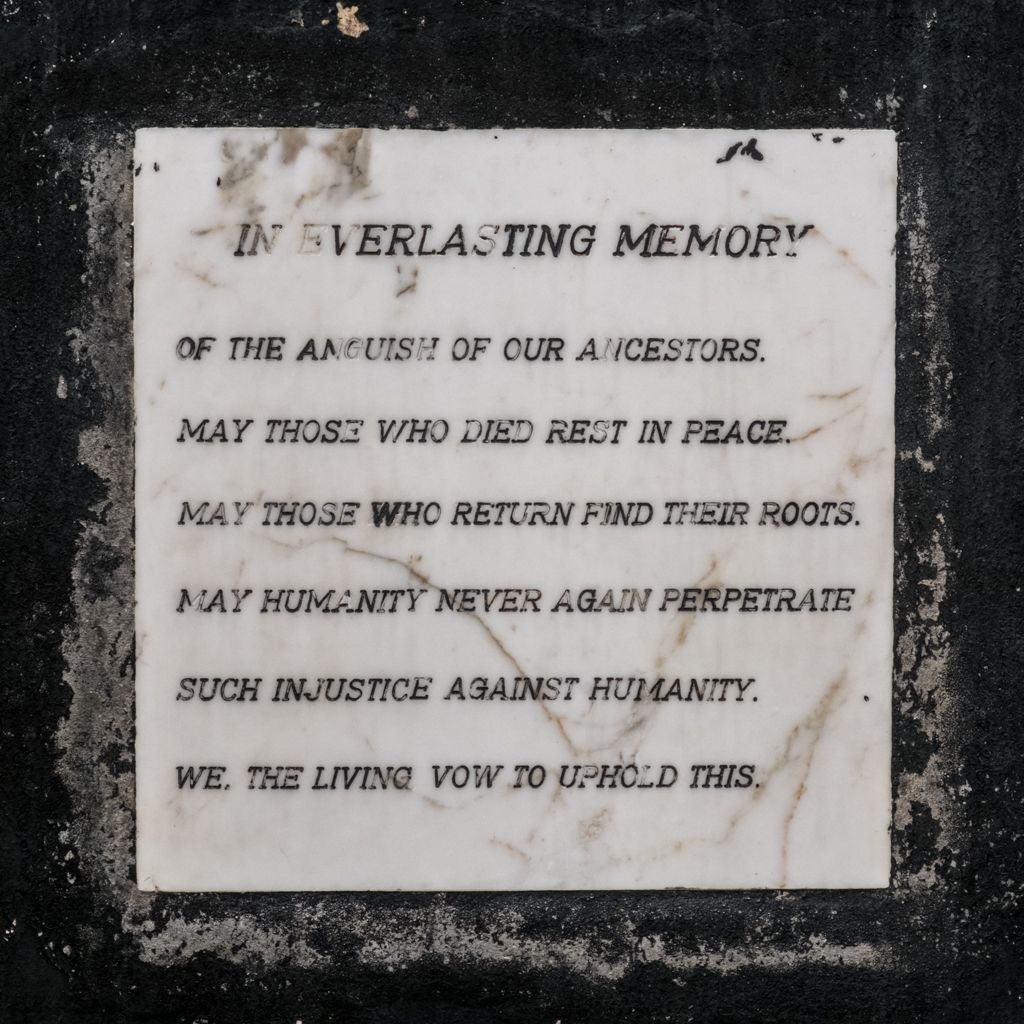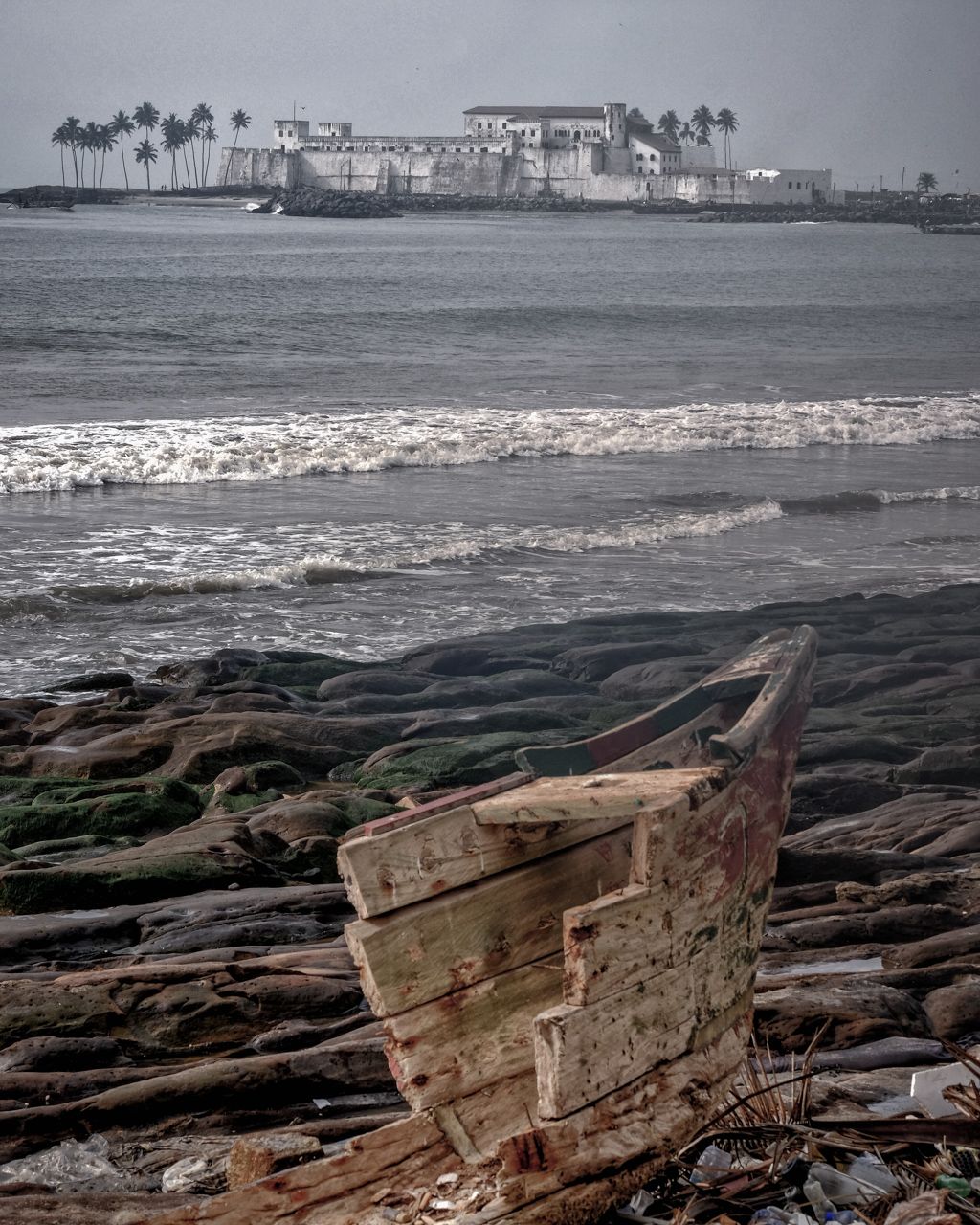GHANA: Elmina
This town on the south central coast of Ghana is notorious as the site of a fortress intimately associated with the slave trade. Sao Jorge da Mina Castle was erected here by Portuguese traders in 1482 and is considered the first permanent European building in Sub Saharan Africa. Although their initial interest was in gold (Elmina referring to “the mine”), the Portuguese soon developed a thriving trade in slaves for which Elmina became the receiving, holding and shipping point. The Dutch seized the fort from the Portuguese in 1637, and the rest of the Portuguese Gold Coast in 1642. The slave trade continued under the Dutch until 1814; in 1872, Britain acquired the fort along with the rest of the Gold Coast. Between the seventeenth and early nineteenth centuries, tens of thousands of men and women may have been held at Elmina. If they survived their temporary internment there, then survived the horrific Atlantic sea passage, they could look forward to resale and a life of slavery in the Americas. The now restored Elmina Castle sits empty and brooding adjacent to the bustling modern town and fishing harbor. This portfolio constitutes a virtual day tour of today’s Elmina and its notable sights: First, the fanciful shrine- and statue-adorned structures called Posubans, a number of which are scattered around the streets of the town. There are about a hundred such structures extant in western coastal Ghana, an area traditionally dominated by the Fante ethnic group. These Posubans were the quarters and storage facilities for local millitias, called Asafo companies, that were traditionally responsible for the protection of neighborhoods and towns. Second, the busy and colorful fishing harbor and market that today is the economic and social heart of Elmina. And third, the fortress itself, now a UNESCO World Heritage site. Here one can view the dungeon-like cells into which were crowded hundreds of people under the most appalling conditions; the tiny cells in which rebellious prisoners were locked in darkness and left to starve to death; the airy quarters of the governor, and the secret passage by which imprisoned women were conveyed to his rooms for his pleasure; the respective chapels of the Portuguese and the Dutch; and the haunting narrow iron door through which the captives would pass one by one down to the beach and on to slave ships that would transport them to their New World of bondage—the infamous “Gate of No Return.”

